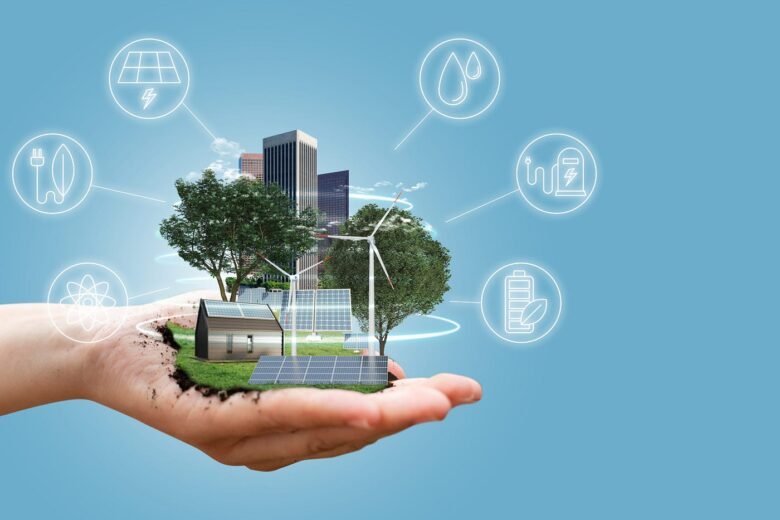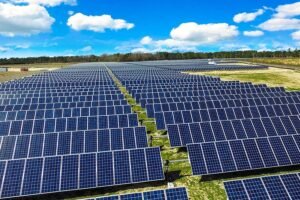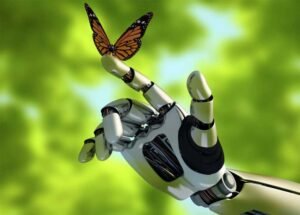Renewable energies produce electricity without emitting carbon emissions or air pollution, thus providing clean and sustainable power solutions that address key environmental and public health concerns. Renewables produce affordable and sustainable power solutions. Advanced technologies are making solar and wind power increasingly cost-competitive with fossil fuels, altering our global energy landscape dramatically and revolutionizing how renewables impact us all. Discover more here about how renewables are changing our world!
1. Solar Power
Solar energy has emerged as one of the fastest-growing sectors within renewable energy. As hardware costs decrease and large corporations commit to 100% renewable energy usage, solar is becoming more accessible and affordable than ever. Solar, or photovoltaic (PV), cells convert sunlight directly into electricity, making them an efficient way of powering small systems such as calculators and watches, or entire homes. Excess energy can either be stored in batteries in your home or sent back out onto the electric grid for use later.
RRenewable energy provides an eco-friendly alternative to nonrenewable resources, which threaten both human health and the environment. Oil drilling destroys wildlife habitats; fracking causes earthquakes and water pollution; coal power plants pollute the air—these nonrenewables pose risks that make renewable energy the only sustainable solution.
2. Wind Power
Wind energy is one of the world’s lowest-cost power sources, available worldwide with consistent winds blowing day and night. Wind turbines generate electricity by spinning blades attached to their tower and spinning the rotor connected to a generator; power from this generator then flows back into our electrical grids.
Longer blades in wind technology enable the capture of more energy per tower height, thereby reducing costs. Researchers are exploring methods to enhance the energy efficiency of wind farms, concurrently tackling challenges associated with wildlife interactions and radar interference.
3. Energy Storage
Energy storage enables electricity to be saved for later use, which helps mitigate against intermittent power sources like solar and wind power. Renewable energies are becoming both more effective and cost-efficient as a result of innovative technologies, including advances in solar cell materials and smarter wind turbines that capture more of the energy from even light winds.
Grid-scale energy storage can help stabilize solar and wind power output by responding to hourly and seasonal fluctuations, assuring a continuous electricity supply. Furthermore, grid storage offers backup power sources while increasing renewable integration. Furthermore, it can enhance existing infrastructure efficiency while decreasing transmission line congestion.
4. Hydrogen
Renewable energy still holds enormous promise despite recent setbacks (like the decision to discontinue fracking), especially hydrogen energy’s potential to lower carbon emissions in industries like oil refining and fertilizer production. Hydrogen can be produced using electricity to make it an environmentally friendly source of renewable energy, with its high energy density enabling storage for later use as power or industrial process fuel.
Hydrogen’s efficiency makes it an attractive solution for intermittent renewable sources like solar and wind, which do not always meet demand; for example, in sun-intensive areas compared to cities where demand exceeds supply. Furthermore, its versatility means it can travel long distances quickly from where energy sources such as sun or wind exist directly to where it’s needed most, helping bridge energy gaps that exist between where renewables exist and those needing it most.
5. Smart Grids
Power system networks must fulfill a range of criteria to guarantee reliable energy supply and power quality, yet one major challenge lies in that their current infrastructure was intended for fossil-fueled generation—therefore upgrading is necessary to accommodate renewables’ intermittency.
Smart grids will play an instrumental role in this effort by minimizing power loss and optimizing network operations while simultaneously managing renewables’ intermittent nature to produce a sustainable energy mix. Other functions include increasing energy efficiency and streamlining the integration of electric vehicles in the grid.
6. Artificial Intelligence
Integration of solar and wind energy into the grid requires power storage—this technology enables solar or wind to be utilized when demand outweighs production.
AI can assist human employees by automating cybersecurity or answering customer queries, which reduces workload for employees. AI also performs potentially hazardous tasks such as analyzing data or operating machinery at extreme heights or depths, including in deep ocean waters or outer space environments. Innovations like these signal a future that’s greener, more reliable, and full of jobs. Stay connected with our Think newsletter for updates on AI, automation, and data.
7. Connected Devices
Consumers are becoming more informed about how energy impacts the environment and communities, which is driving renewable energy’s rapid expansion.
Renewable technology also delivers improved energy efficiency. Solar panels and wind turbines generate power close to its point of consumption, minimizing transmission losses. Energy storage solutions like solid-state and flow batteries help address intermittent energy from solar and wind sources. These technologies will continue to drive innovation within the global energy industry. While economic uncertainty may ease by 2024, its effect on business confidence and spending should last well into the next decade.
8. Internet of Things
Renewable energy demand is rising quickly due to its potential to combat climate change, boost economic development, and ensure energy security. Cutting-edge technologies that increase efficiency, decrease costs, and enhance storage are driving this shift towards renewables.
These technologies include solar panels that can be mounted to roofs or water surfaces, floating photovoltaics, and flow batteries—more cost-effective energy storage alternatives to lithium-ion batteries—that are all used. IoT enhances connectivity among connected devices by analyzing data at the “edge” of a network’s reach while prioritizing critical communications, ultimately improving service delivery quality while decreasing costs.
9. Big Data
Data can provide organizations with invaluable insight and help them make more informed decisions, uncover growth opportunities, and identify areas for improvement. However, it’s crucial that any data you access is valid and accurate in order to make good use of its potential benefits.
Big data offers an effective solution. By compiling large datasets from various sources, big data provides a more complete picture of your business operations, such as operational efficiency, customer experience, and more. Volume, Velocity, Variety, Veracity, and Value (VVVV). Volume refers to the size of datasets; velocity measures how quickly data is produced and analyzed; variety encompasses formats that range from unstructured text files to semi-structured formats like JSON or XML; while veracity addresses accuracy.




